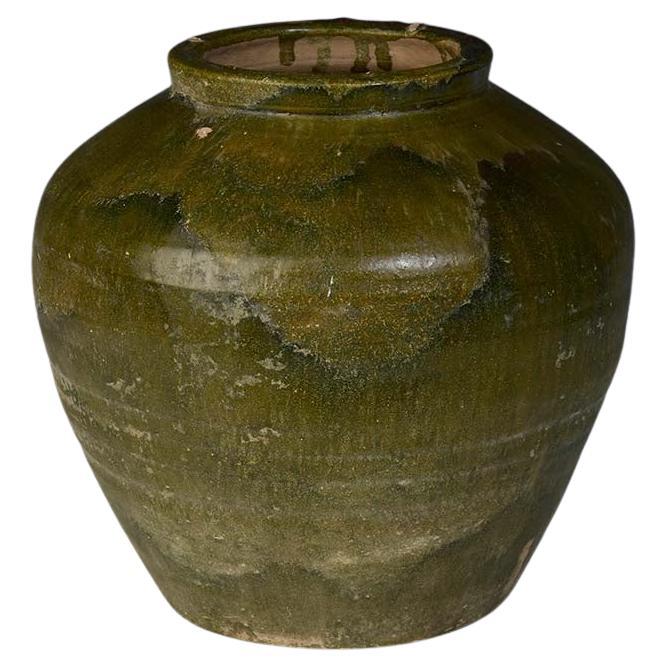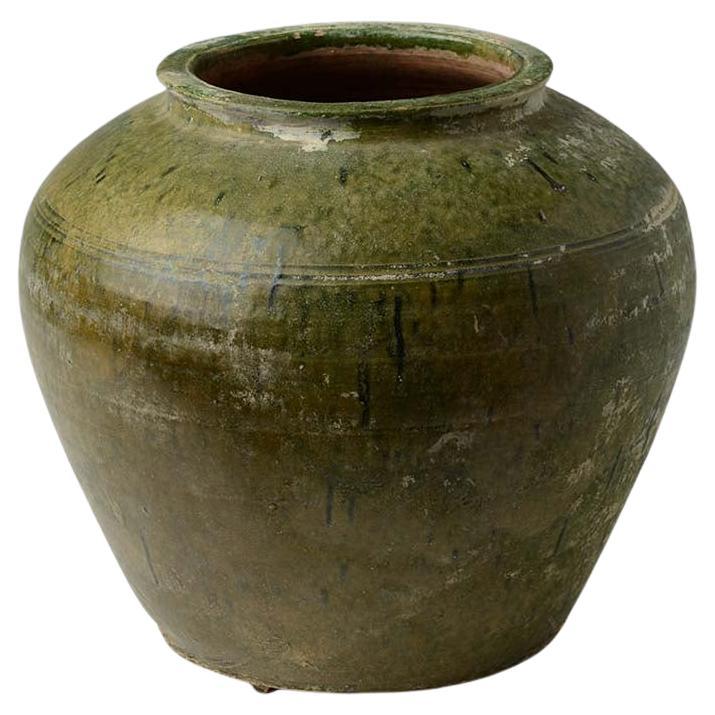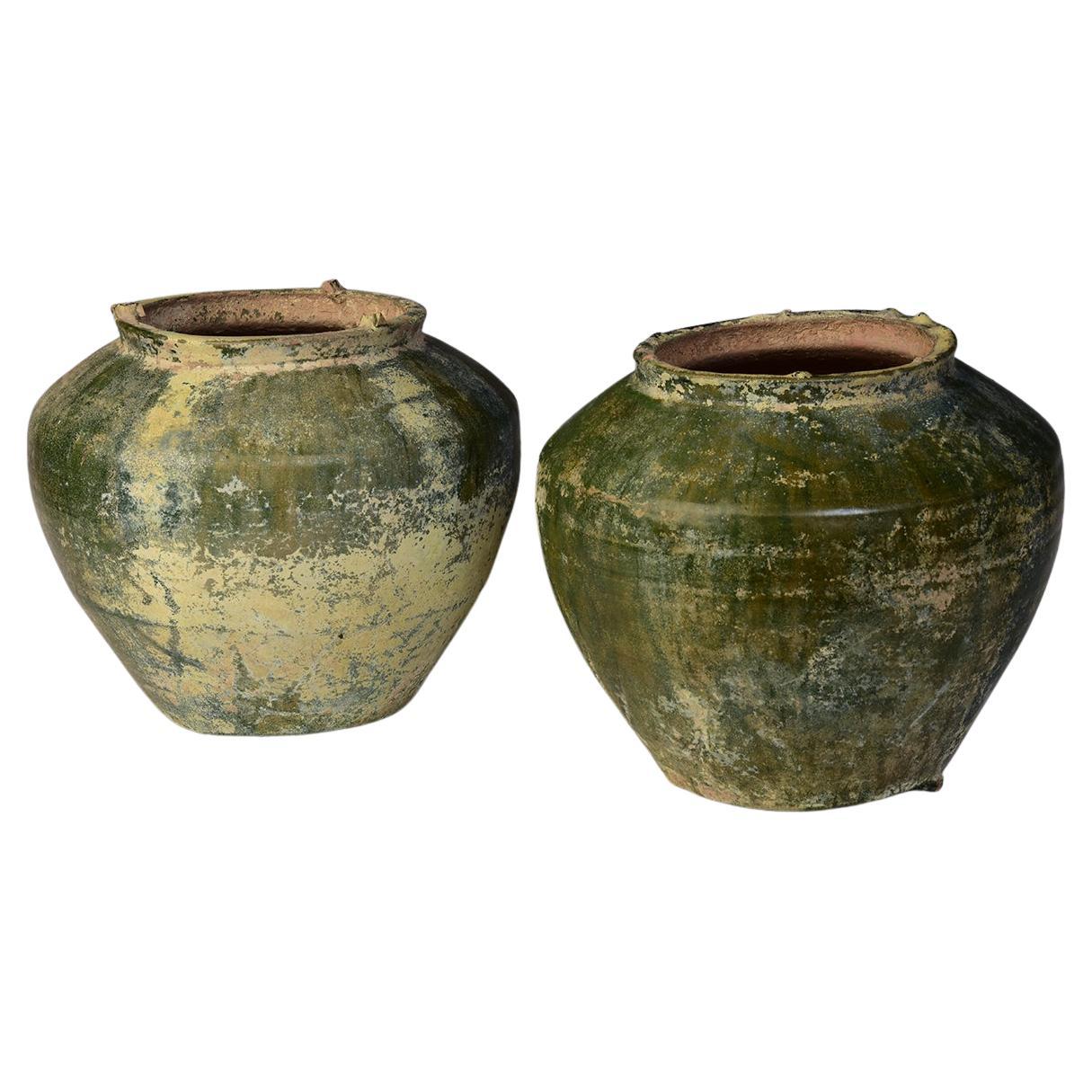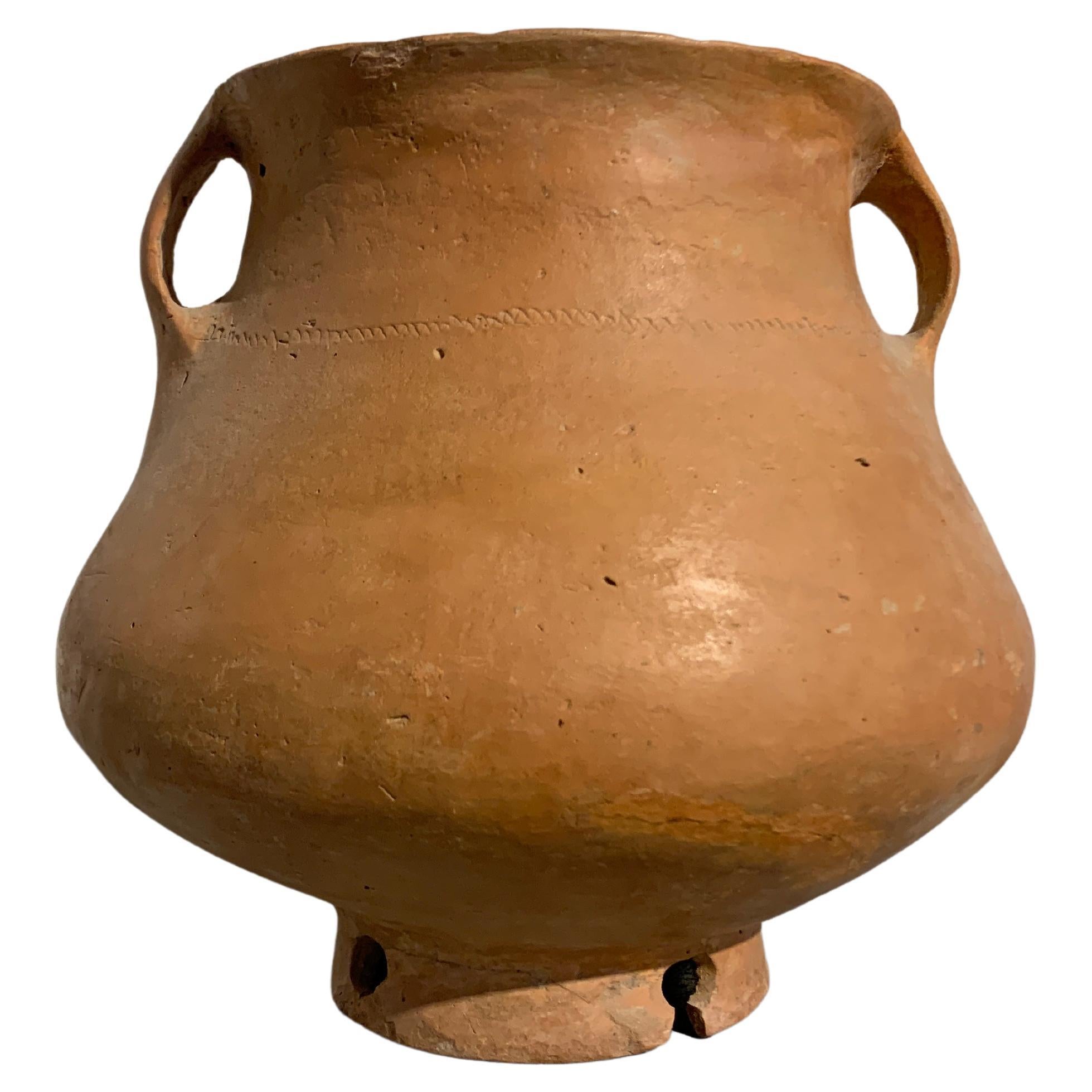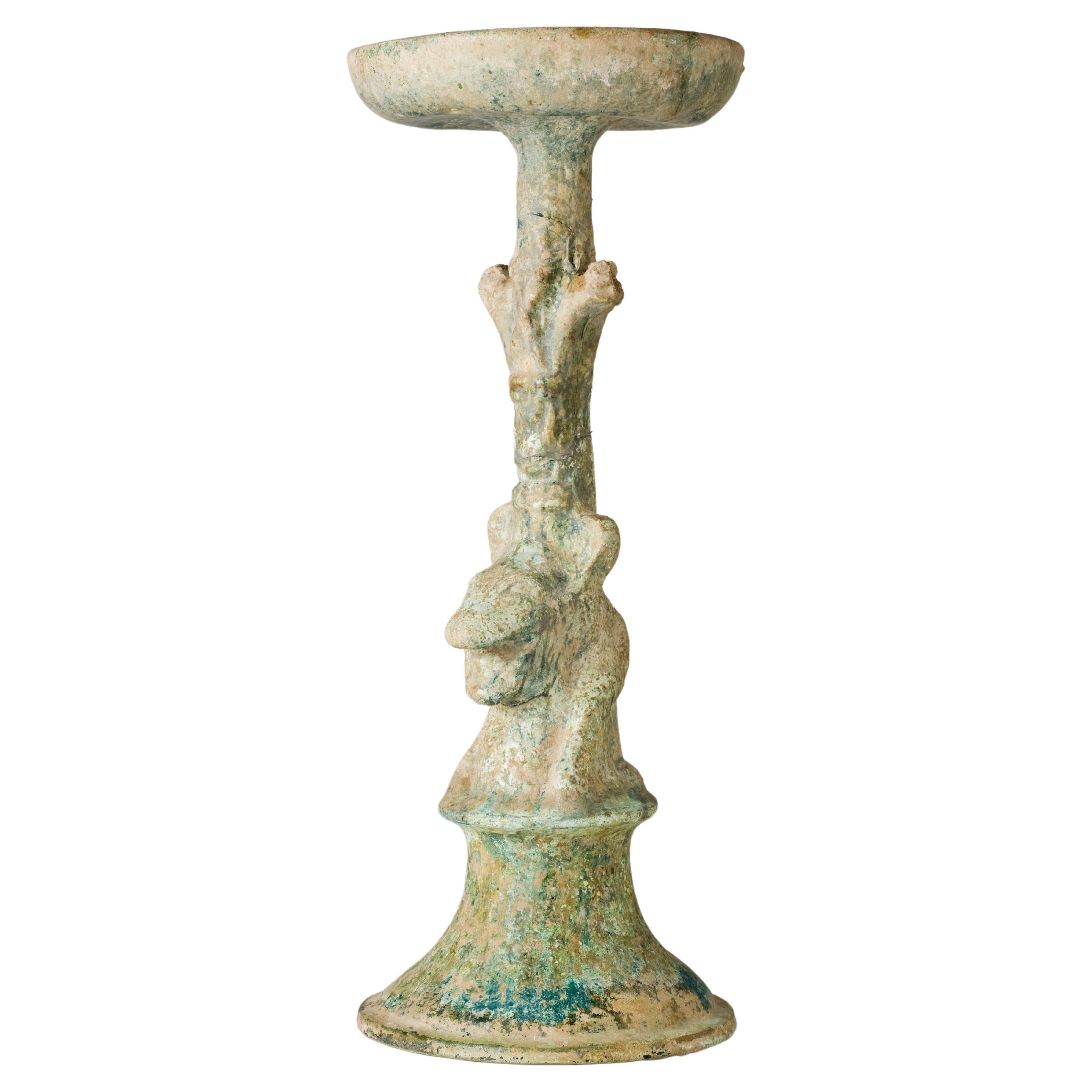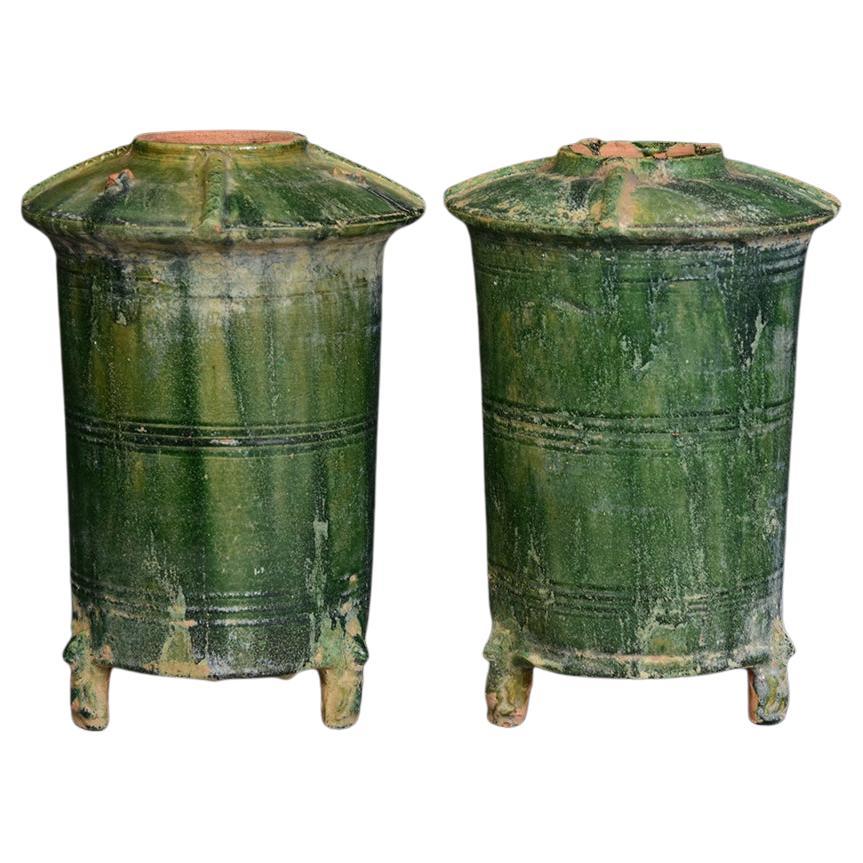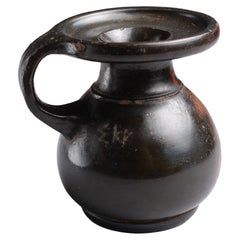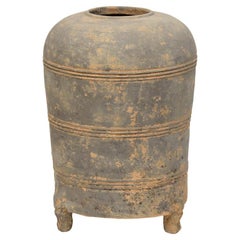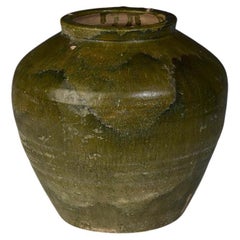
Ancient Chinese Han Dynasty Pottery Bull, 206 BC
View Similar Items
Want more images or videos?
Request additional images or videos from the seller
1 of 7
Ancient Chinese Han Dynasty Pottery Bull, 206 BC
About the Item
- Dimensions:Height: 5 in (12.7 cm)Diameter: 9 in (22.86 cm)
- Materials and Techniques:
- Place of Origin:
- Period:
- Date of Manufacture:206 BC
- Condition:Intact and with no restorations. Excellent preservation of original pigment.
- Seller Location:London, GB
- Reference Number:1stDibs: LU105224017143
About the Seller
5.0
Recognized Seller
These prestigious sellers are industry leaders and represent the highest echelon for item quality and design.
Established in 2008
1stDibs seller since 2014
100 sales on 1stDibs
Typical response time: 8 hours
Associations
LAPADA - The Association of Arts & Antiques DealersInternational Confederation of Art and Antique Dealers' AssociationsThe British Antique Dealers' Association
More From This SellerView All
- Ancient Greek Perfume BottleLocated in London, GBAthenian Black-glaze perfume pot with inscription Athens, c. 425-400 B.C. Terracotta Measures: Height: 9cm; diameter across lip: 7.5cm; width including handle: 9cm This 5th Cen...Category
Antique 15th Century and Earlier Italian Classical Greek Bottles
MaterialsPottery
- Ancient Greek Corinthian HelmetLocated in London, GBCorinthian helmet with Bull Horns and Lotus Flower Decoration. Archaic Period, c.550-500 BC. Cast, hammered and incised bronze. An exceptionally well preserved example of one of the most iconic ancient Greek...Category
Antique 15th Century and Earlier European Classical Greek Mounted Objects
MaterialsBronze
- Ancient Silver Celtic Tetradrachm CoinLocated in London, GBCeltic ‘Dachreiter’ Tetradrachm Minted in Eastern Europe, circa 1st-2nd Century B.C. Silver A magnificent Celtic tetradrachm of the Dachreiter (“roof-rider”) type, minted by a C...Category
Antique 15th Century and Earlier Mounted Objects
MaterialsSilver
- Ancient Hellenistic Glass Finger RingLocated in London, GBThis beautifully preserved ring was cast from light green transparent glass. Its large size and shape are typical of Hellenistic finger rings, and its now ...Category
Antique 15th Century and Earlier Classical Greek Glass
MaterialsGlass
- Ancient Roman Turquoise Glass CupLocated in London, GBTurquoise glass cup Roman Empire, circa 3rd-4th century A.D. With old label reading ‘’965’’. “Pliny relates that the art of glass-making [.] was actua...Category
Antique 15th Century and Earlier Italian Classical Roman Glass
MaterialsGlass
- Ancient South Arabian Alabaster InscriptionLocated in London, GBSouth Arabian Alabaster Inscription Calcite Alabaster circa 1st century A.D. ‘’Consequently, neither white marble of Paros nor any other stone which men admire can be compared with the precious stones of Arabia, since their whiteness is most brilliant, their weight the heaviest, and their smoothness leaves no room for other stones to surpass them.’’ - Diodorus Siculus, Library of History, Book II, 52.9 This inscription, finely worked on an alabaster tablet, is a remarkably well preserved example of Ancient South Arabian script, with its distinct bold, angular forms, written in the Qatabanic dialect - that is, the dialect spoken by the people of the kingdom of Qataban, which ruled much of modern day Yemen from the 7th Century B.C. to the 2nd Century A.D. The text, which reads: ‘[... ...]sa?d and Ma?add?i- / (of the lineage) of Hawfa- / She entrusted Anb- / against any malfeasance (which would remove it) from its place’ - indicates that it likely served to commemorate a temple offering. The quality of the script, incised so neatly into the surface of the alabaster, tells us that this piece was commissioned by somebody of considerable wealth and prestige, employing a scribe of equally considerable expertise. South Arabia was known throughout the ancient world for its incredible wealth - so much so that the Romans termed the region ‘Arabia Felix’ - literally, ‘Happy, or Fortunate, Arabia.’ That wealth was built largely on the trade of spices and incense, in which the Kingdom of Qataban played a major part. According to Pliny the Elder, this was the sole country through which frankincense could be exported, first being collected in the city of Shabwa, on the South Arabian coast, and from there travelling by camel up to Gaza, to be shipped all across the Mediterranean - not only that, but all growers of myrrh across Arabia were required to give a quarter of their yield to the king of the Qatabanians. As such, the kingdom became exceedingly rich and powerful, and Pliny goes on to tell us that ‘The nations of the Larendani and the Catabani, and the Gebanitæ [...] occupy a great number of towns, the largest of which are Nagia, and Thomna (the capital of Qataban) with sixty-five temples, a number which fully bespeaks its size.’ Because of the nature of its exports, frankincense in particular - the ‘sweat of of the gods’ according to the Egyptian Book of the Dead, and perhaps most famous as one of the three gifts brought to the newborn Christ - being closely associated with the divine, South Arabia’s reputation in antiquity was as a mysterious, almost sacred, and - crucially - extraordinarily wealthy region, at the very edge of the known world; in the words of Herodotus: ‘’Enough of marvels, and yet the land of Arabia gives off a scent as sweet as if divine.’’ This inscription invokes the protection of god Anbay, the judge-oracle of the chief god ‘Amm, who he served as an attendant. Much of what we know of the religious life of the ancient South Arabians comes to us from early Islamic texts, describing what is known in Islamic scholarship as ‘Jahiliyyah’ - the age before the advent of Islam in Arabia. What comes across in much of these texts is that these religious practices placed a great deal of emphasis on sacred stones, perhaps linked to the brilliance of the alabaster which is local to the region, and which a great many of the cult-objects produced in this time are made from. Hisham ibn-Al-Kalbi’s Book of Idols records: ‘’The Arabs were passionately fond of worshipping idols [...] Whenever a traveller stopped at a place or station in order to rest or spend the night, he would select for himself four stones, pick out the finest among them and adopt it as his god, and use the remaining three as supports for his cooking-pot.’’ This inscription was once in the collection of the intrepid British-Australian travel...Category
Antique 15th Century and Earlier Yemeni Abstract Sculptures
MaterialsAlabaster
You May Also Like
- Han Dynasty, Antique Chinese Pottery Granary JarLocated in Sampantawong, THChinese pottery granary jar, with cylindrical shape, decorated with bands of incised lines, and supported by three legs. Age: China, Han Dynasty, 206 B.C. - A.D. 220 Size: heigh...Category
Antique 15th Century and Earlier Chinese Antiquities
MaterialsPottery
$1,000 Sale Price20% Off - Ancient China Monumental Stone Ram Han Dynasty, 206BC-220ADLocated in South Burlington, VTChina, a large votive model of a stone ram, Han dynasty (206BC-220AD) Dimensions: 45cm, 18 inches high and 65cm, 26 inches length and 25cm, 10 inches wi...Category
Antique 15th Century and Earlier Chinese Han Sculptures and Carvings
MaterialsLimestone
- Han Dynasty, Antique Chinese Green Glazed Pottery JarLocated in Sampantawong, THChinese green glazed pottery jar. Lead glaze with copper is the main colorant used in Han period to produce green glaze. Greenware became popular during the Eastern Han...Category
Antique 15th Century and Earlier Chinese Antiquities
MaterialsPottery
$1,760 Sale Price20% Off - Han Dynasty, Antique Chinese Green Glazed Pottery JarLocated in Sampantawong, THChinese green glazed pottery jar in globular form with plain decoration. Lead glaze with copper is the main colorant used in Han period ...Category
Antique 15th Century and Earlier Chinese Antiquities
MaterialsPottery
$1,760 Sale Price20% Off - Chinese Cocoon Jar, Burnished Gray Pottery, Western Han Dynasty, ChinaLocated in Austin, TXA classic Chinese Han Dynasty "cocoon jar" of high fired burnished gray pottery, Western Han Dynasty (206 BC - 9 AD), China. The jar of typical form, w...Category
Antique 15th Century and Earlier Chinese Han Antiquities
MaterialsPottery
- Han Dynasty, Antique Chinese Brown Glazed Pottery Granary JarLocated in Sampantawong, THChinese pottery brown glazed granary jar, with cylindrical shape, decorated with bands of incised lines, and supported by three legs in the shape of bears. Age: China, Han Dynasty...Category
Antique 15th Century and Earlier Chinese Antiquities
MaterialsPottery
$1,000 Sale Price20% Off

